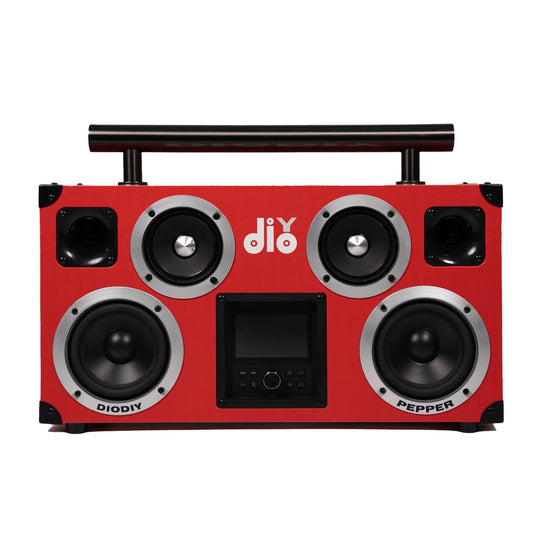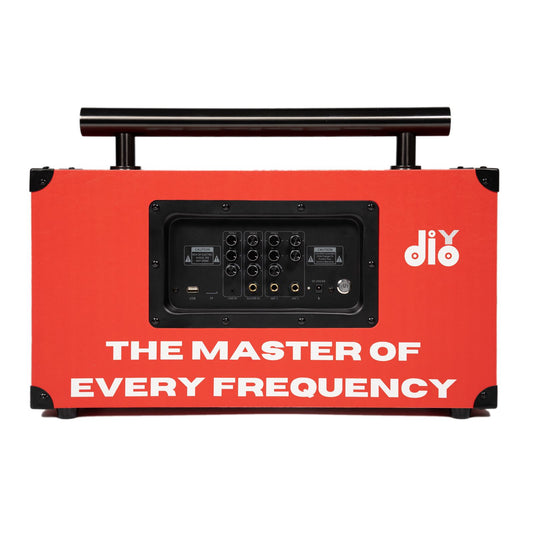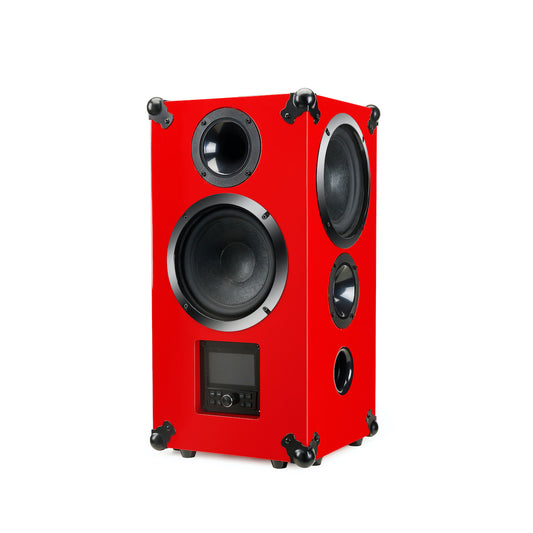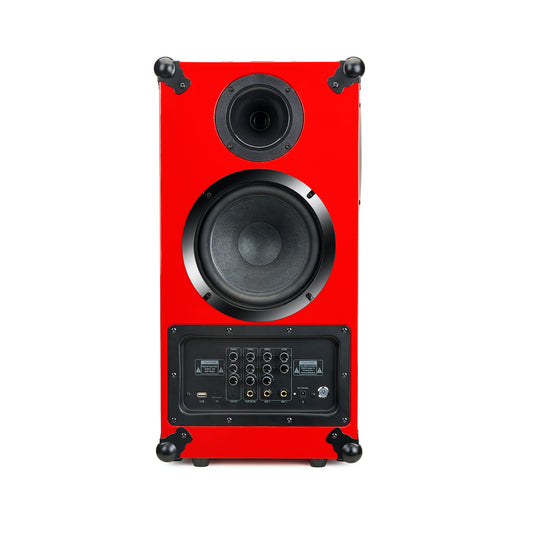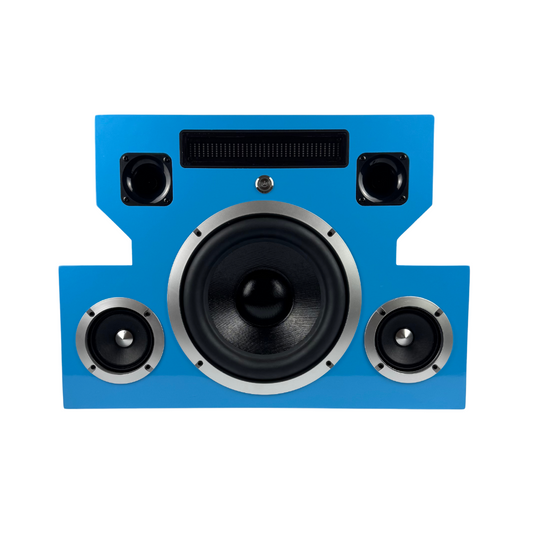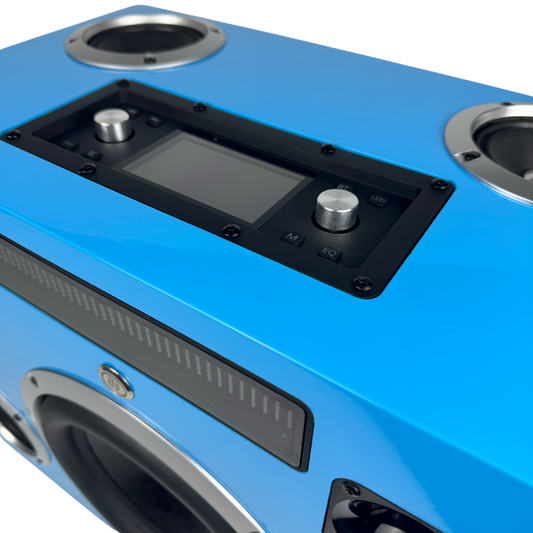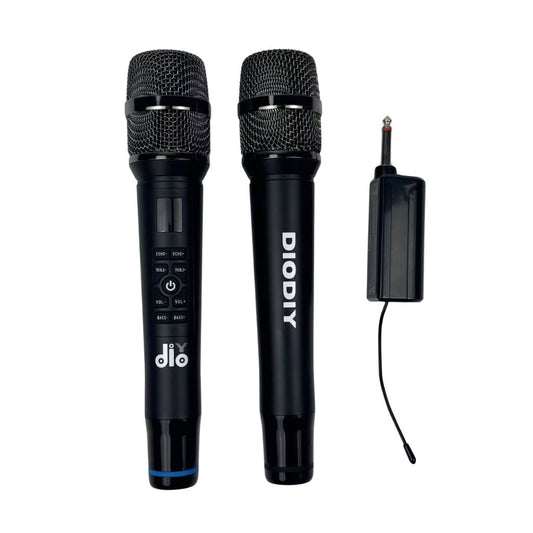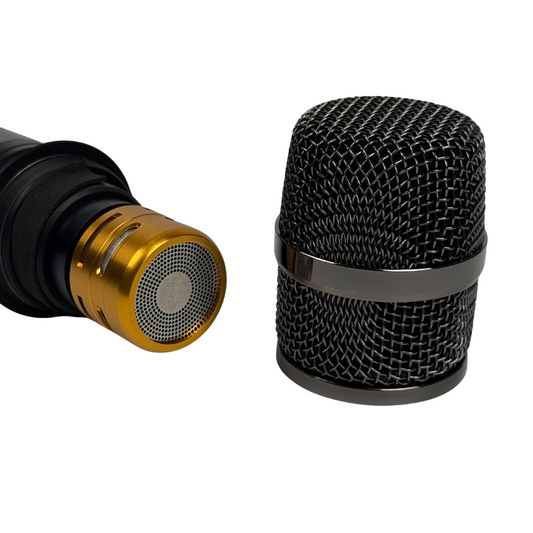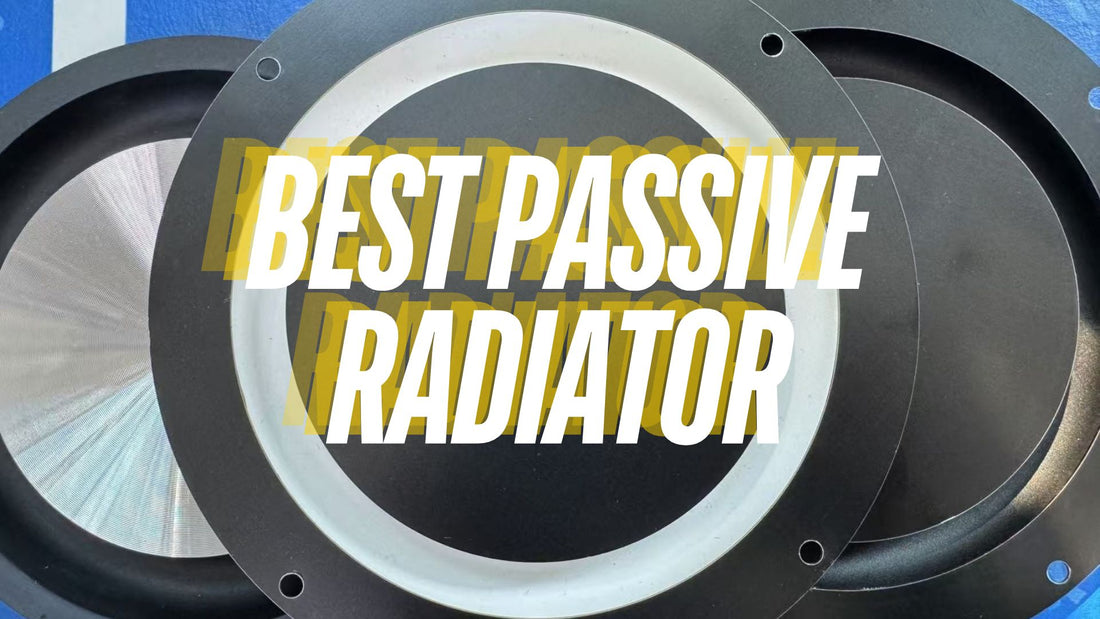
How to Choose the Best Passive Radiator for Your Custom Speaker
Share
When designing a custom speaker, selecting the right passive radiator is a crucial decision. The passive radiator plays a significant role in enhancing bass performance and overall sound quality, but getting it wrong can lead to muddled or inefficient sound. In this blog, we’ll explore the key factors that affect a passive radiator’s performance and guide you on how to choose the best one for your custom speaker project.
What is a Passive Radiator?
A passive radiator is a speaker component that enhances low-frequency sound (bass) by moving in response to air pressure changes inside the speaker enclosure. Unlike active drivers, it doesn’t have a voice coil or require direct electrical input. Instead, it works in tandem with the active driver, helping to amplify bass tones without the need for additional power.
Key Factors to Consider When Choosing a Passive Radiator
Several factors determine how well a passive radiator will perform. Let’s break down the most important ones.
1. Softness and Weight of the Passive Radiator
The softness and weight of a passive radiator are critical to achieving balanced bass output. Here’s how they impact performance:
- Softness: If the passive radiator is too soft, it moves too easily, causing chaotic and unmatched movement with the active loudspeaker. This leads to unclear bass and a loss of sound clarity. Conversely, if the radiator is too hard, it resists movement, reducing its ability to respond to air pressure changes. This makes the passive radiator ineffective, essentially “losing its job.”
-
Weight: Most passive radiators include a central iron weight that affects their performance.
- If the weight is too light, it may cause chaotic movement, similar to an overly soft radiator.
- If the weight is too heavy, it reduces the elasticity and responsiveness of the bass, making the sound less dynamic.
- The ideal balance of softness and weight depends on the design and desired sound characteristics of your speaker.
2. Placement of the Passive Radiator
Where you place the passive radiator within the speaker enclosure significantly affects its performance. Here are some common placements and their impact:
- Bottom Placement: Placing the passive radiator at the bottom can increase the volume of bass, but it may also create unclear bass. This is because the air hits the ground in a short distance, generating a counterforce that interferes with the passive radiator’s movement.
- Side or Back Placement: These are the most common positions for passive radiators. Side or back placement reduces interference from air counterforce and offers better alignment with the active loudspeaker’s output. This results in clearer, more dynamic bass.
The best placement for your passive radiator depends on the structure of your speaker enclosure. Experimentation is often necessary to find the optimal position.

3. Volume Level and Performance
Passive radiators excel at producing high-quality sound when the speaker is operated at medium or lower volumes. At these levels, the passive radiator can maintain balanced movement, enhancing bass without distortion. However, at maximum volume, passive radiators may struggle to keep up, leading to chaotic movement and reduced clarity.
If you prefer listening to music at high volumes, you might consider a ported speaker design instead, as it handles high-power output more effectively.
4. Number of Passive Radiators
While a single passive radiator can improve bass performance, using two passive radiators often delivers better results. Dual radiators help distribute air pressure more evenly, reducing distortion and providing a more immersive bass experience.
However, the decision to use one or multiple passive radiators should be based on your speaker design and extensive testing. The ideal configuration depends on the size of the enclosure, the active driver’s characteristics, and your desired sound output.
Experimentation: The Key to Success
Every speaker design is unique, and the best way to determine the right passive radiator setup is through experimentation. Try different combinations of softness, weight, placement, and the number of radiators to see what works best for your specific project.
- Test various radiators with different weights and materials to fine-tune the bass output.
- Experiment with placement to avoid air counterforce interference.
- Use frequency response measurements to verify that the passive radiator is enhancing, not distorting, the sound.
By repeatedly testing and refining your design, you can achieve a custom speaker setup that delivers the high-quality sound you’re aiming for.
How DioDIY Supports Your Custom Speaker Needs
At DioDIY, we specialize in creating custom speakers that meet the highest standards of performance and design. As a leading speaker manufacturer, we understand the importance of every component, including passive radiators, in delivering an exceptional audio experience.
Our experts can help you choose and integrate the ideal passive radiator for your custom project. Whether you’re designing a home audio system or a portable Bluetooth speaker, we provide the tools, components, and guidance to ensure your design exceeds expectations.
Conclusion: The Role of the Passive Radiator in High-Quality Sound
Choosing the right passive radiator for your custom speaker is essential for achieving powerful bass and balanced sound. By considering factors such as softness, weight, placement, and volume performance, you can design a speaker that perfectly suits your needs.
Remember, while passive radiators perform best at medium or low volumes, their placement and configuration are just as important. Experimentation and attention to detail are key to unlocking the full potential of your custom speaker design.
Whether you’re a hobbyist or a professional, DioDIY is here to support your journey with high-quality components and expert advice. Let us help you create a speaker that stands out for its design and performance.

